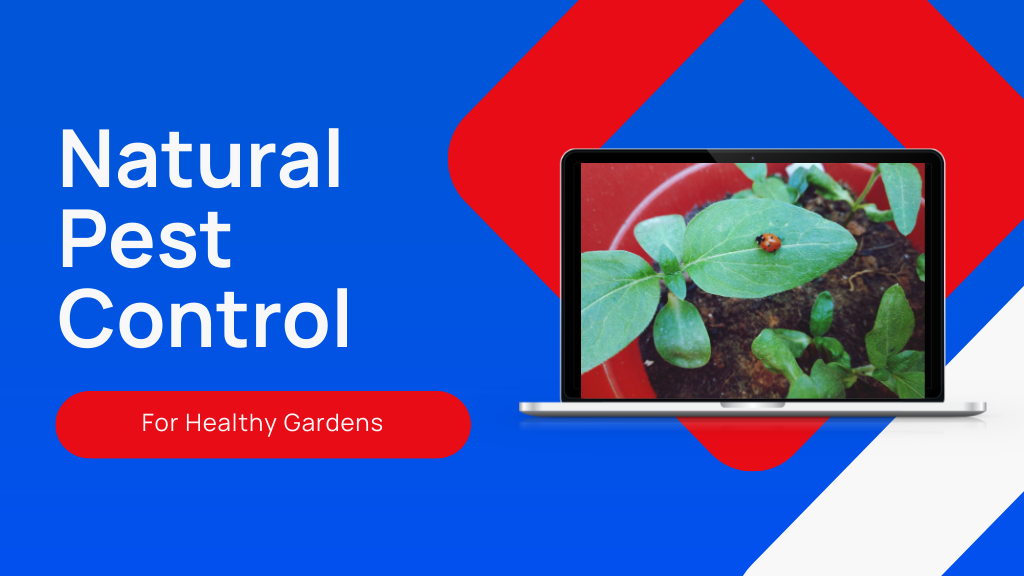To care for succulents successfully, water only when the top inch of soil feels dry, soaking it thoroughly.
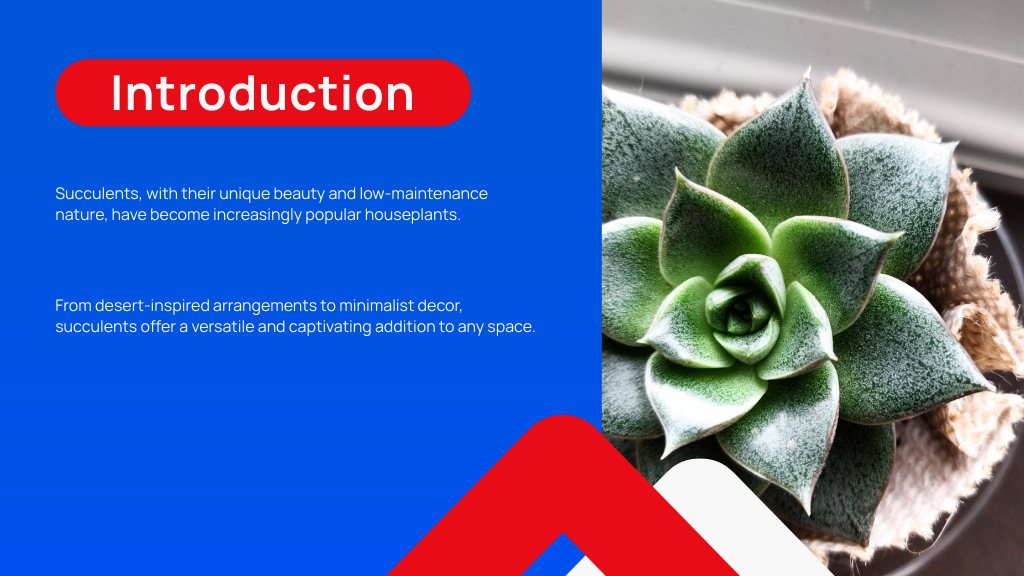
Make sure they get about six hours of bright, indirect sunlight daily, and use well-draining soil to prevent root rot. Keep an eye out for signs of overwatering, like mushy leaves or a musty smell. Adjust watering and light exposure with the seasons. For more insights on their care and propagation, you won't want to miss the details!
Understanding Succulent Watering Needs
When it comes to watering your succulents, understanding their specific needs is essential to prevent overwatering or underwatering. These plants store water in their leaves, so they don't require frequent watering.
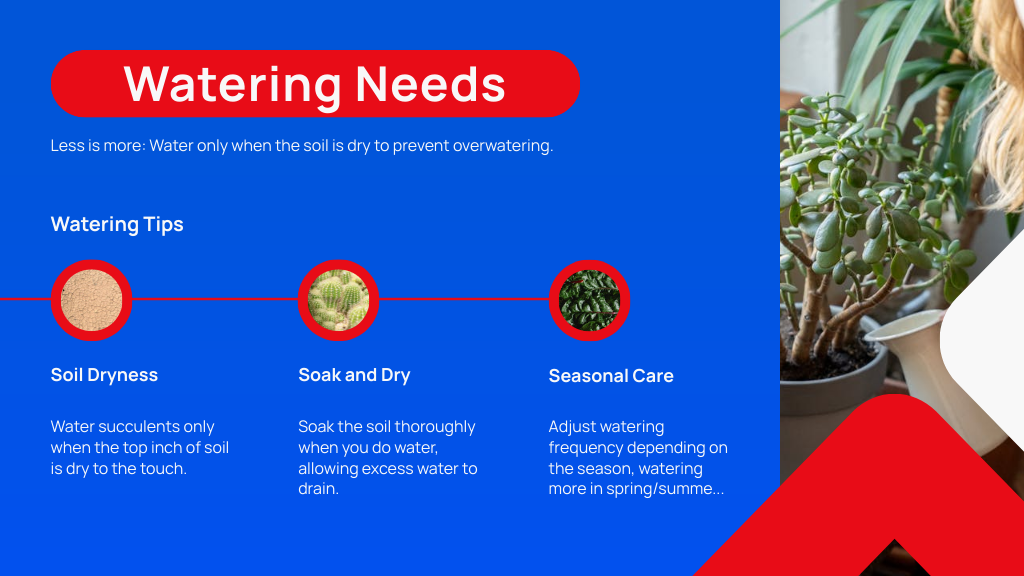
Generally, you should water succulents only when the top inch of soil feels dry. When you do water, soak the soil thoroughly, allowing excess water to drain out. This method encourages deep-root growth. During the growing season, which typically spans spring and summer, you may need to water more often, while in the dormant winter months, reduce your frequency. Remember, it's better to underwater than overwater, as succulents are more tolerant of drought.
Optimal Sunlight Conditions for Succulents
Although succulents can tolerate a range of light conditions, they thrive best in bright, indirect sunlight.

When you're figuring out how to care for succulents indoors, consider these key points:
- Place them near a sunny window, but avoid direct sunlight that can scorch their leaves.
- Rotate your succulents regularly to guarantee even light exposure on all sides.
- If natural light is limited, consider using grow lights designed for plants.
Choosing the Right Soil for Succulents
Choosing the right soil for succulents is essential for their health and growth. When you're learning how to take care of a succulent indoors, opt for a well-draining mix specifically designed for cacti and succulents. These blends typically contain ingredients like perlite, pumice, or coarse sand, which facilitate drainage and airflow.

Avoid regular potting soil, as it retains too much moisture, risking root rot. If you prefer creating your own mix, combine equal parts potting soil, coarse sand, and perlite. This combination provides the necessary nutrients while ensuring proper drainage.
Always remember to check the soil's moisture levels before watering, as succulents thrive in dry conditions. With the right soil, your succulents will flourish beautifully indoors!
Importance of Proper Drainage
Proper drainage is essential for keeping your succulents healthy and preventing root rot, which can quickly kill your plants.

The type of soil you choose plays a significant role in drainage, so it's vital to select a mix that allows excess water to escape.
Prevent Root Rot
One key factor in preventing root rot in succulents is ensuring proper drainage. When you're caring for succulents, always choose pots with drainage holes that allow excess water to escape. Without this, water can accumulate, leading to soggy soil and root decay.
To enhance drainage, consider these tips:
- Use well-draining soil designed for succulents to prevent water retention.
- Elevate pots slightly using pot feet or trays to promote airflow underneath.
- Water sparingly, allowing the soil to dry out completely between waterings.
Soil Type Matters
Selecting the right soil type is fundamental to the health of your succulents, particularly when it comes to drainage. Succulents thrive in well-draining soil that prevents excess moisture, which can lead to root rot.
When learning how to care for succulent plants, opt for a mix specifically designed for cacti and succulents, or create your own by combining potting soil with sand or perlite. This combination enhances aeration and drainage, allowing the roots to breathe. Avoid standard potting soil, as it retains too much water. Always use pots with drainage holes to further support proper water flow.
Fertilizing Succulents: When and How
Although succulents are known for their resilience, they can benefit greatly from periodic fertilization, especially during their active growing season in spring and summer.
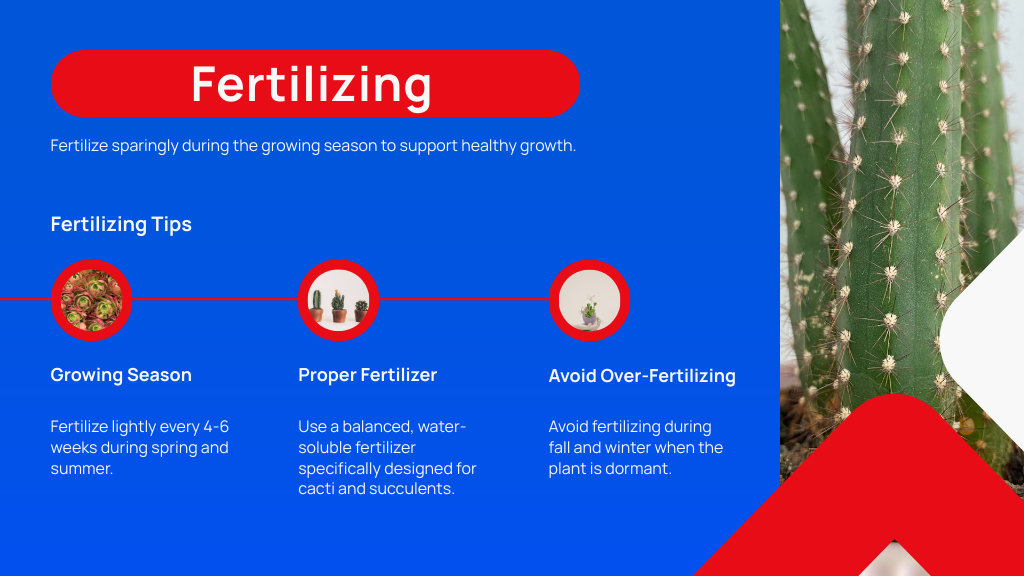
Fertilizing succulents: when and how involves using a balanced, diluted fertilizer every 4-6 weeks. This helps promote healthy growth without overwhelming your plants.
For succulent care for beginners, remember these tips:
- Use a water-soluble fertilizer specifically designed for cacti and succulents.
- Apply fertilizer after watering your plants to prevent root burn.
- Avoid fertilizing during dormant periods in fall and winter.
Identifying Common Pest Issues
Pests can pose a significant threat to your succulents, so it's crucial to recognize the common types and signs of infestation early.
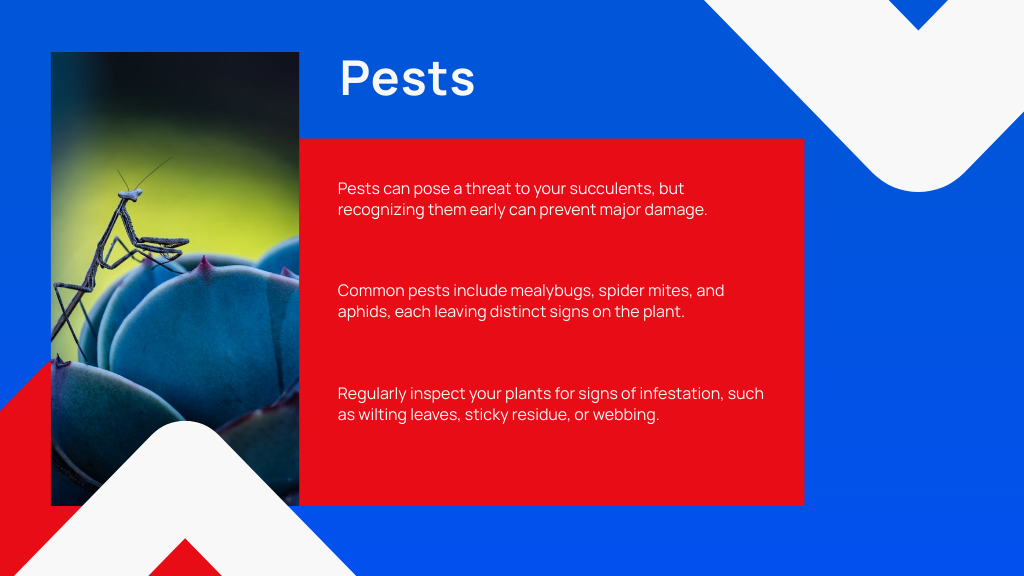
Look out for symptoms like wilting leaves or sticky residue, which can indicate unwanted visitors. Understanding how to treat and prevent these issues will help keep your plants thriving and healthy.
Common Pest Types
How can you tell if your succulent is suffering from a pest issue? Knowing the common pest types can help you act quickly and effectively.
Some of the most prevalent pests include:
- Mealybugs: Small, white, cotton-like insects that cluster in leaf axils.
- Spider mites: Tiny, often unnoticed pests that leave webbing and cause stippling on leaves.
- Aphids: Small, green, or black insects that suck sap and can lead to stunted growth.
To take care of succulents successfully, inspect your plants regularly and keep their environment clean. Implementing preventive measures, such as proper watering and good air circulation, can reduce the likelihood of infestations. Identifying these pests early can save your succulents from significant damage.
Signs of Infestation
What signs should you watch for to determine if your succulent is infested with pests? First, look for visible insects like mealybugs, aphids, or spider mites. You might notice a sticky residue on the leaves, known as honeydew, which indicates pest activity. Check for webbing, particularly with spider mites, or a cotton-like substance from mealybugs.
Yellowing or wilting leaves can signal stress caused by pests. Additionally, if you see tiny holes or scars on the foliage, it's a sign that pests are feeding on your plant.
When caring for succulent plants, regularly inspecting for these signs helps you catch infestations early and maintain their health. Stay vigilant to guarantee your succulents thrive!
Treatment and Prevention
Although succulents are resilient, taking proactive steps for treatment and prevention can save your plants from common pest issues. Regularly inspecting your plants helps you catch problems early. If you notice pests like aphids or mealybugs, act quickly. You can treat infestations by using insecticidal soap or neem oil, ensuring you follow the instructions carefully.
To enhance your succulent care routine, consider these preventive measures:
- Keep your plants in well-ventilated areas to discourage pests.
- Avoid overwatering, as it attracts unwanted critters.
- Quarantine new plants for a couple of weeks before introducing them to your collection.
Recognizing Signs of Overwatering
One clear indicator that your succulent is suffering from overwatering is the appearance of mushy leaves.
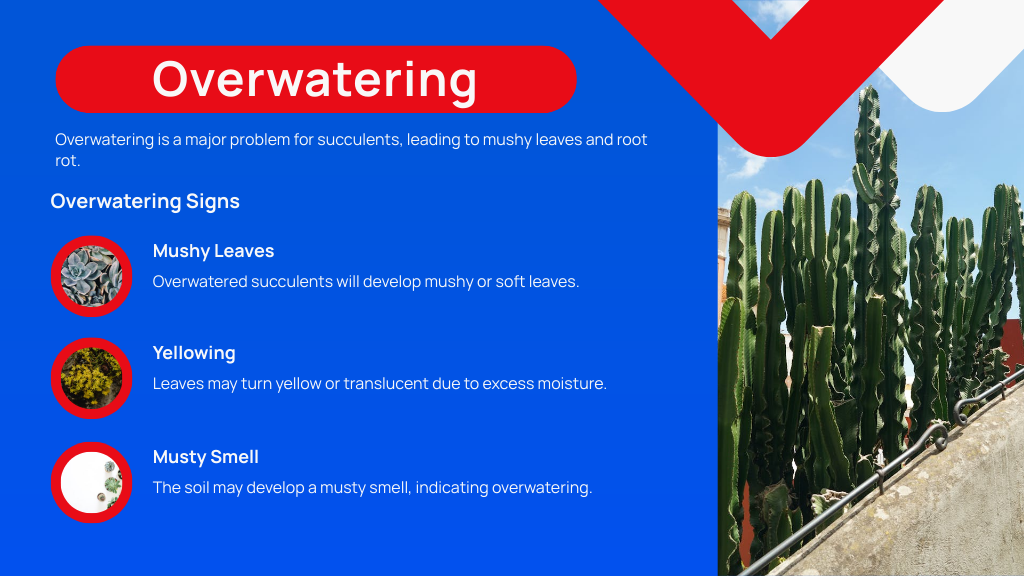
This softness is a sign that the plant's cells are bursting due to excess moisture. You might also notice leaves turning yellow or translucent, which indicates stress. Additionally, check the base of the plant; if it's brown or black, root rot may have set in, requiring immediate attention.
The soil may smell musty, another clear sign of too much water. To guarantee proper succulent care, always let the soil dry out between waterings, and use well-draining soil.
Preventing Etiolation in Succulents
Overwatering can lead to various issues in succulents, but insufficient light is another common problem that can cause etiolation. When your succulents don't get enough light, they stretch toward the light source, resulting in elongated, weak growth.

To prevent this, make sure you provide adequate lighting for your plants.
Here are some tips for effective succulent care:
- Place your succulents in bright, indirect sunlight for at least six hours a day.
- Rotate your plants regularly to promote even growth.
- Consider using grow lights if natural light is limited.
Seasonal Care Adjustments
As the seasons change, you'll need to adjust your succulent care routine to keep them thriving.
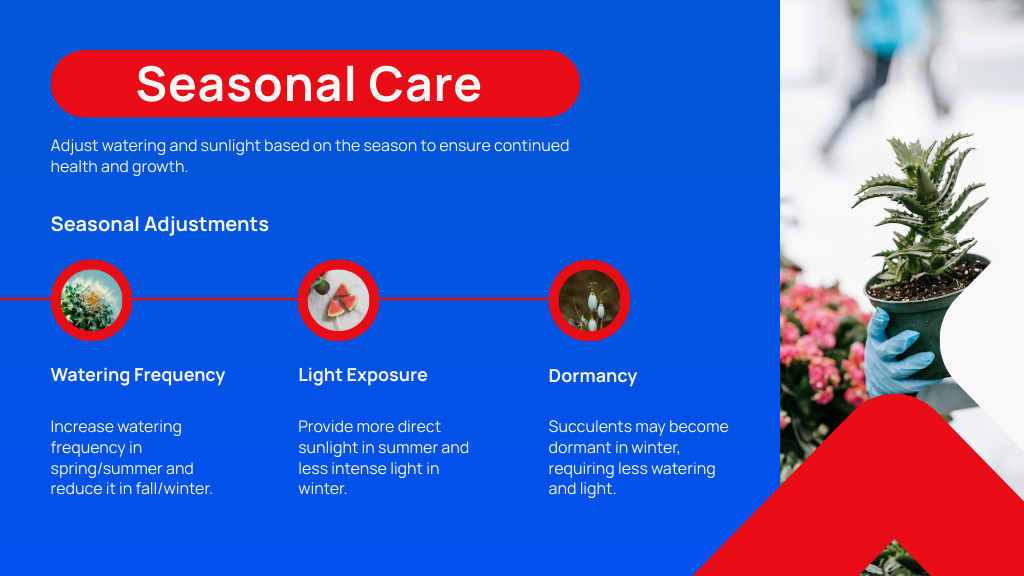
In warmer months, increase your watering frequency, while in colder months, reduce it to prevent overwatering. Additionally, be mindful of light exposure, as succulents may require more direct sun in the summer and less during the winter.
Adjusting Watering Frequency
Adjusting your watering frequency throughout the seasons is essential for keeping your succulents healthy and thriving. During spring and summer, when growth is active, your succulents will need more water. Aim to water them every 1-2 weeks, ensuring the soil dries out completely between waterings.
In contrast, during fall and winter, their growth slows down, and you should reduce watering to every 3-4 weeks. This seasonal adjustment prevents root rot and promotes ideal succulent care.
- Monitor soil moisture regularly.
- Adjust pot size to help with drainage.
- Consider your home's humidity levels.
Light Exposure Changes
While succulents can adapt to various light conditions, their light exposure needs to change with the seasons, so it's important to monitor and adjust accordingly.
In spring and summer, they thrive in bright, direct sunlight; aim for at least six hours daily. However, as days shorten in fall and winter, they'll need less intense light.
You can move them to a spot with filtered sunlight or even under fluorescent lights if necessary. Be attentive to signs of stress, like stretching or discoloration, as these indicate they're not getting enough light.
By understanding how to keep succulents alive through seasonal changes, you guarantee they remain healthy and vibrant all year round. Adjust their location as needed to provide the ideal light conditions!
Propagating Succulents Successfully
If you're looking to expand your succulent collection, propagating them is a rewarding and straightforward process.
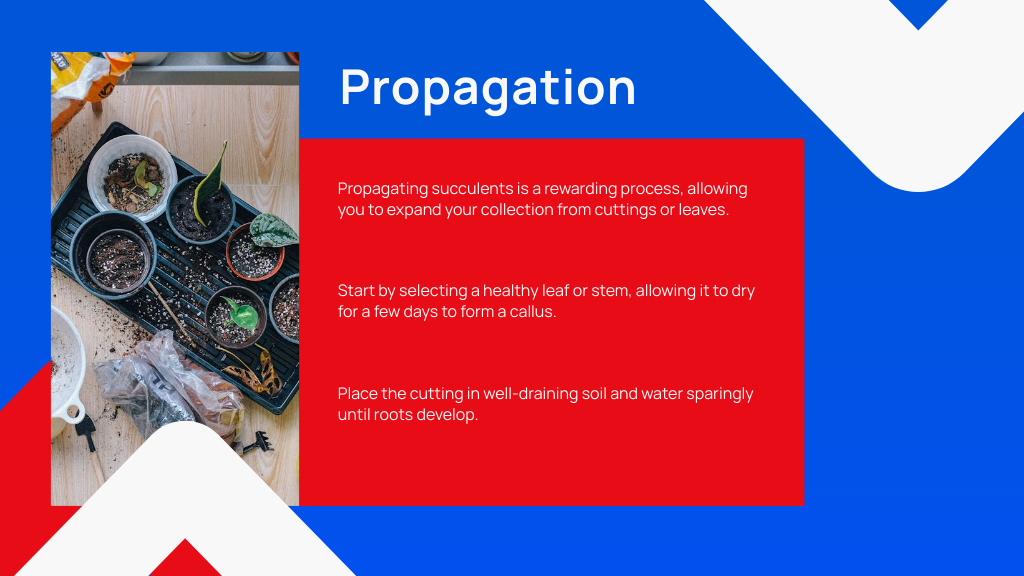
You can easily grow new plants from cuttings or leaves, making it a fun part of succulent plant care indoors. Start by selecting healthy leaves or stems from your existing plants. Allow them to dry for a few days to form a callus, which helps prevent rot. Then, place them in well-draining soil and water sparingly until roots develop.
- Choose healthy, mature plants for cuttings.
- Use a well-draining soil mix to prevent root rot.
- Keep the new cuttings in bright, indirect light.
With patience and attention, you'll enjoy watching your succulent collection flourish!
Conclusion
Caring for succulents is like nurturing a friendship; it thrives on attention and understanding. Just as you wouldn't drown a friend in your concerns, you shouldn't overwater your plants. By following the right care techniques—proper watering, sunlight, and soil—you'll cultivate a vibrant collection that flourishes like a garden of camaraderie.

Remember, with patience and knowledge, your succulents will reward you with their stunning beauty, creating a lively oasis that brings joy to your space.
















